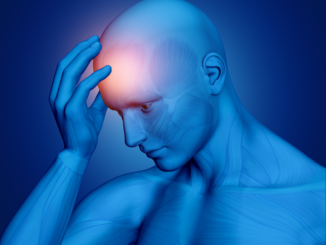
Problems with the bladder, such as incontinence and a distended bladder, are frequent in nature.
Leaking urine is a symptom of bladder incontinence. A person with this condition may choose to wear pads or diapers so that other people do not detect the presence of leaky urine.
An individual who suffers from bladder incontinence is one who has to go to the bathroom frequently. On the other side, if a person is unable to completely empty their bladder, they will develop a condition known as distended bladder.
A distended bladder can cause a great deal of discomfort, and in the most severe cases, it can even be life-threatening.
It is common knowledge that having a distended or bloated urine bladder can lead to venous obstruction, and in certain extremely rare instances, it can even lead to bowel obstruction.
Patients who present themselves with symptoms including constipation and venous blockage require a more comprehensive differential diagnosis in order to evaluate whether or not they are suffering from urinary bladder distension.
Acute blockage of the bladder outflow might result in symptoms including the beginning of edema on lower extremities as well as altered mental status.
It is possible for venous congestion to develop as a result of pulmonary disease, kidney insufficiency, decompensated heart failure, or liver dysfunction, leading to a worsening of the edema on both sides of the lower extremity.
The exacerbation of the swelling in the lower extremities may also be related to a thromboembolic event (impairment to the blood vessel due to clot formation), external compression of the venous flow, or lymphatic obstruction.
A distended bladder that presses on the external iliac vein or the inferior vena cava can also contribute to bilateral pedal edema, even though it is more commonly associated with kidney disease, chronic venous stasis, liver disease, heart failure, and pulmonary hypertension, as well as the side effects of medications such as dihydropyridine calcium channel blockers. On the other hand, the swelling of the bilateral lower extremities is commonly linked to dihydropyridine calcium channel blockers.
It is important to know that a false diagnosis of distended bladder may also emerge from the occurrence of any of the above-mentioned conditions.
As a result of the wide variety of symptoms that can accompany a distended bladder or urinary retention, it can be difficult for medical professionals to evaluate whether or not a venous obstruction may be the root cause of the condition.
Occasionally, it has been observed that bladder distension can play a role in the development of venous blockage, which can lead to clinical confusion with other illnesses such as congestive heart failure or deep vein thrombosis.

Causes of a Distended Bladder
An infection is the most prevalent cause of a distended bladder.
Inflammation of the bladder, caused by an infection, can lead to a blockage of urine flow.
An infection that affects the prostate might cause it to expand, which would cause it to press on the urethra. This would cause the flow of urine to be blocked.
In males, an enlarged prostate can put more pressure on the bladder, which can lead to the organ being distended and causing discomfort.
In addition, infections of the urinary tract can cause the urethra to expand, which can lead to a swollen bladder.
It’s also possible that sexually transmitted illnesses are to blame.
People may experience the urge to urinate despite the fact that they are unable to actually pass urine.
A dilated bladder has also been connected to taking certain medications. You should consult a physician if you notice a change in your urine patterns or routines after beginning treatment with the prescribed medication.
The use of over-the-counter drugs, such as antihistamines or pills for treating allergies and colds, might also contribute to the problem if they are taken regularly.
Drugs such as anticholinergics, certain blood pressure-lowering medications, hormonal agents, antipsychotics, and muscle relaxants are also potential causes of bladder distension.
Problems with the nerves might also bring to bladder distension.
Because the individual’s brain sends messages to the bladder, which then sends information to the urethra, bladder retention can occur when there is a problem with the neural pathway that connects the brain to the bladder and the bladder to the urethra.
Diabetes, damage to the pelvis or spine, tumors near the spinal cord, stroke, and multiple sclerosis are examples of common illnesses and disorders that can exert pressure on an individual’s spinal cord, causing nerve difficulties. Because they have an effect on the individual’s spinal column, medical problems such as strokes and blood clots are potentially potential suspects in this case.
The use of anaesthesia during a recent surgical procedure may result in adverse effects, including an enlarged bladder.
It is possible for the bladder to become distended after undergoing procedures such as rectal surgery, hip replacement surgery, surgery to remove haemorrhoids, or surgery for conditions that affect women.
Symptoms of a Distended Bladder
Symptoms that a person is suffering from bladder distension include the following:
- Leakage of urine or incontinence
- Straining when peeing
- Not able to pass urine, also known as anuria.
- Pain in the chest and lower abdomen, along with pain in the lower back
- Unhealthy levels of blood pressure
- Anxiety
- Persistent feeling of full bladder
- Pain during urination
- Urine doesn’t move in one flow
- Condition known as hematuria, resulting in the presence of blood in urine.
- excessive perspiration or fever
- Having only a minimal volume of pee to expel
- Nocturia refers to the condition of having to urinate frequently during the night.
Due to the fact that the volume of the pelvis is fixed, it is possible for an individual’s distended bladder to create compression of adjacent structures. For example, a dilated bladder is known to cause the inferior vena cava to become compressed or put under pressure.
In addition to this, it is known to cause compression of both the left and right external iliac veins.
When veins are compressed, this can sometimes lead to a condition called deep vein thrombosis.
An increase in the pressure in the femoral veins may be felt by individuals who suffer from urine retention and have bladder capacity that are greater than 1000 milliliters.
Patients who already have edema in their legs or swelling in their lower extremities have a greater risk of developing higher femoral vein pressures.
In addition to this, a bloated bladder can exert strain on the recto-sigmoid colon.
Because of the recto-vesicourethral reflex, bladder distension can make constipation worse, in addition to the compression that it causes on the structures that are next to the bladder.
In cases of bladder distension, anal pressures can be very elevated, and in cases that have gotten worse, rectal motility may be non-existent.
It is possible that the excitatory’vesico-anal’ reflex that is released at the spinal level of the individual, is the factor that is contributing to the increase in anal pressure or the absence of rectal motility.
For instance, a bladder distension with a capacity of 5,000 mLs can cause the bladder to expand to the point where it is able to compress the colon.
In addition to that, the gross distension may play a role in the development of physiological reflex faecal stasis.
Treatment for Bladder Distension
When treating a patient who has a distended bladder, a physician will first investigate the underlying cause in order to choose the most effective method of treatment.
In the event that the distension of the bladder is related to the medicine, the prescribing physician may need to switch the drug.
When treating a distended bladder that is caused by an infection, the treatment will typically depend on the type of infection that is present.
The acute form of distended bladder can be treated by inserting a catheter into the urethra, which will help drain the bladder. This procedure is done in order to address the condition.
Surgical intervention can be necessary in cases where an enlarged prostate is the root cause of bladder distension.
Authoritative Clinical References
Managing patients with distended bladder – https://pubmed.ncbi.nlm.nih.gov/11107386/






Be the first to comment